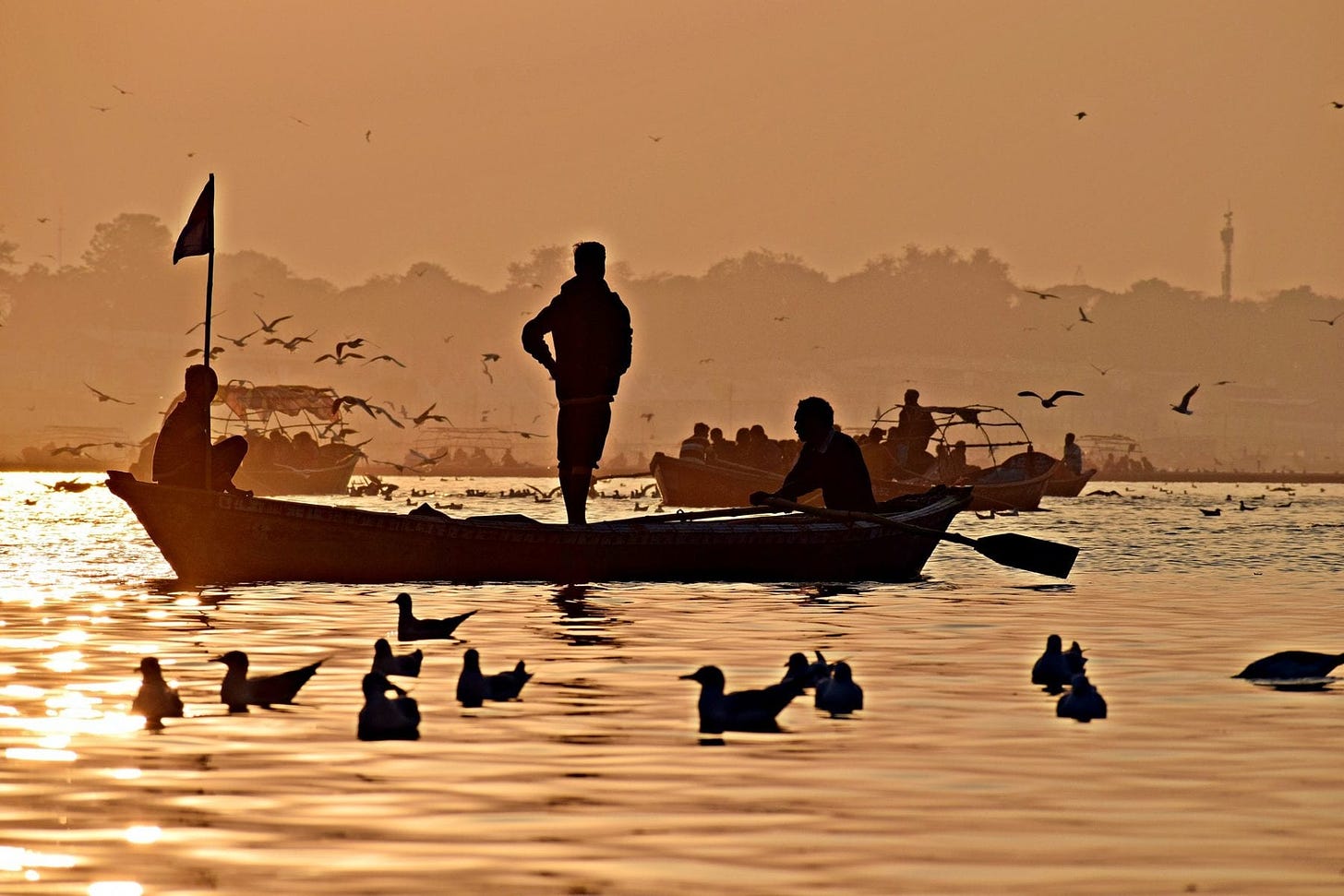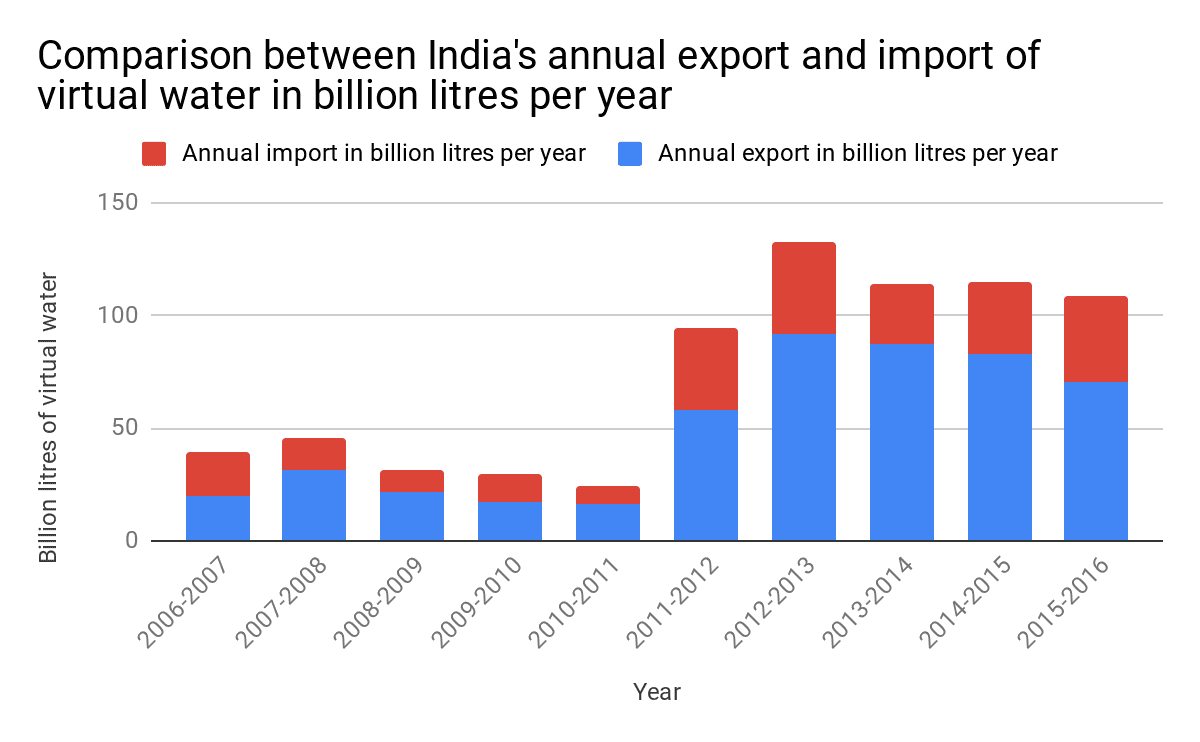Virtual Water Trade in India – A definitive guide

Virtual Water Trade is a game-changing flow that has been underway globally as it gets ready to disrupt societies, economies, and food security in many societies. Virtual Water Trade in India and from India is an important topic. Something that needs to be properly understood for correct public policy decisions. It is no longer good for the country to export food products outside. Specifically meat items. That, India is one of the largest exporters of beef – buffalo meat – is bound to have a devastating impact on the country’s water resources in the coming decades. We discussed Virtual Water Trade around the globe in our last post.
Significant studies on Virtual Water Trade in India
A study by researchers from Anna University, Chennai tried to quantify the temporal variation in the virtual water trade in India from the year 2006–2016 through popular food and livestock products. The study, which was funded by the Department of Science and Technology, found that 496.9 Gm3 (billion cubic meters) and 237.2 Gm3 of water were traded virtually in the form of exports and imports respectively during the period 2006 to 2016. (Source).
The lop-sided virtual water trade in India can be gauged from the water required to create the food exports from and imports into India.
In India, farmers rely heavily on groundwater for rice cultivation, and a kilogram of paddy requires about 15,000 litres of water to grow. Since the country is also one of the top producers and exporter of beef, the virtual water necessary for producing per kilogram of buffalo meat was 5–20 times higher than that for agricultural production. The imported products with the highest virtual water content were cashew, followed by pulses and wheat. These crops demand less water for their production than rice. Research Matters
Scientists at the Bangalore-based Council of Scientific and Industrial Research Fourth Paradigm Institute have developed an algorithm to study the ‘virtual water trade’ of China and India. The Chief Scientist, Prashant Goswami, asserts India’s food trade policy should ensure that there is no net loss of virtual water. (Source)
An article in Nature.com lays out the real danger that India is facing in terms of net export of virtual water.
From a negligible value until about 1990, India’s virtual export of water for all crops has risen to about 1.5 percent of the available water (Fig. 2a), or about 4 percent of annual water involved in production (Fig. 2b). In terms of actual quantity, this export is about 25 × 109 m3 for India; which is equivalent to the annual water demand of nearly 13 million people (Fig. 2c). On the other hand, India’s virtual water import was about 3 percent of its total water involved in production during 1960–1970, which then fell to negligible values during 1980–2000; the current value is once again about 1 percent.Nature.com
Meanwhile, China has virtual import of water higher than its virtual export of water throughout the period 1960–2010. Since 2001, China has started imported more water-intensive crops like grain and soya beans from US, Brazil and Argentina.
Research Matters shares this very informative graph on the difference in India’s annual export and import of the virtual water in billion liters per year.

Nation’s water strategy needs radical shifts
Battles between states and fights over rivers in India has led to several ecologically disastrous impacts in the last few decades. We have seen how Karnataka and Tamil Nadu along with Kerala have been at loggerheads over Cauvery water. Cauvery water dispute has been for over two centuries long.
Water is a state subject and that adds to the complexity of managing India’s water resources properly. Water should become a “Centre subject” and we should get rid of all the tribunals and bring in a uniform national policy. D. Chandrasekharam, Rtd. Professor, Dept. Earth Sciences, IITB, Mumbai; Visiting Prof IIT Hyderabad; writes in a TOI blog:
Take for example the surface water resources of Kerala. Since I worked in this state in a water-related research center I have sufficiently good knowledge about the surface and groundwater resources of the state. Out of nearly 44 rivers, three rivers, Kabini, Bhavani, and Pamba, are east-flowing rivers, and the rest drain into the Arabian Sea. All these rivers are short in length unlike other rivers like the Godavari, Krishna, and Cauvery. The average length of the rivers is about 57 km. Thus they are short and drains 80 % of the surface water into the Arabian Sea. The state receives over 3500 mm of rain year after year and imagine how much water is being drained into the sea!!D. Chandrasekharam
As the experts say, the food exports need to be controlled and managed. Exports of water-intensive products should be brought down. That is easily said than done because agriculture exports generated 1.29 lakh crore sales for India in 2019. It is not possible to bring about a quick change in the flows of Virtual Water trade out of India without damaging several businesses and foreign exchange earnings in India.
Until those changes are made, Indian agriculture will need to reinvent itself to utilize the water better.
Effective irrigation techniques, irrigation scheduling, suitable crop selection based on climatic conditions, soil type and water availability, and using alternative sources of water for irrigation could help reduce groundwater consumption.Research Matters
Until the shift in virtual water trade in India can be made decisively, Indian farmers will need to reduce the use of water in agriculture as much as possible.



